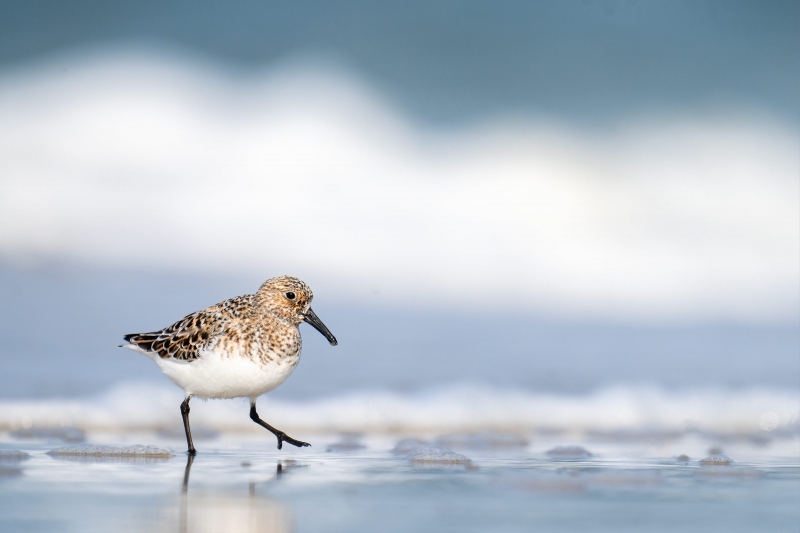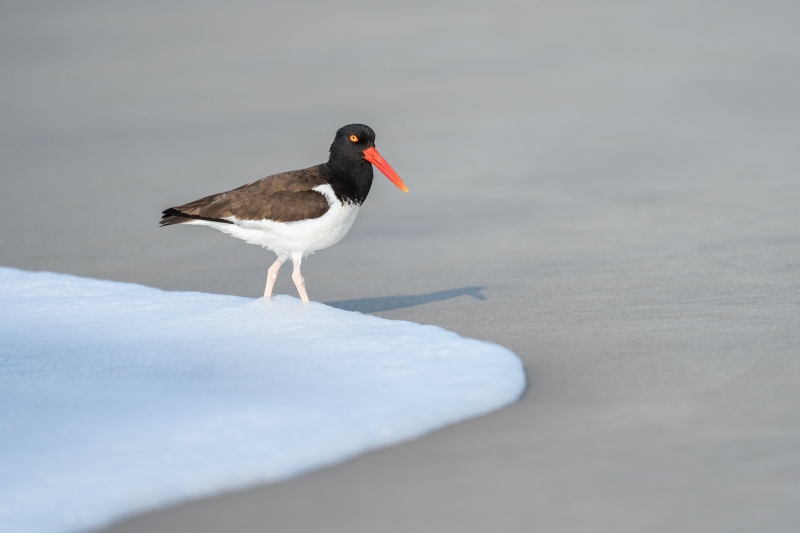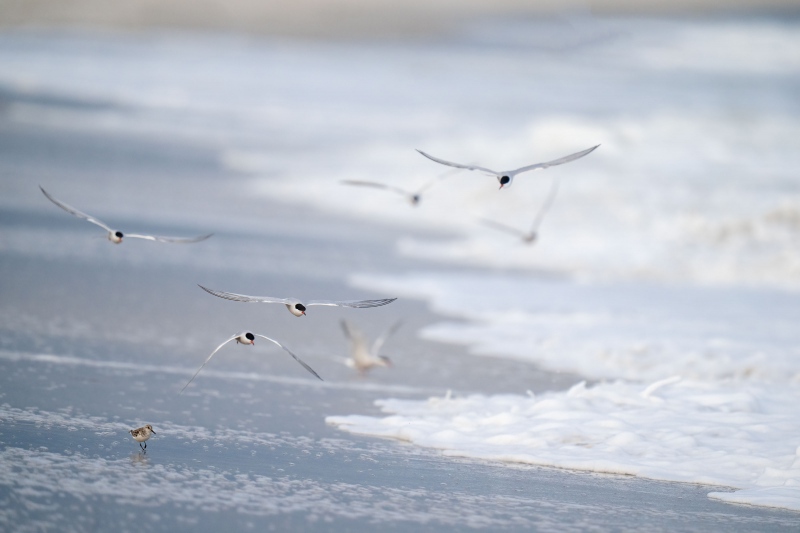What’s Up?
I changed my bandage for the first time on Tuesday evening, DAY 5 after the trigger finger surgery. The incision looks fine, clean, and black with no redness at the edges and just a bit of expected swelling on the pad of the palm below my shutter button finger. The stitches will be removed this coming Monday.
Today is Wednesday 31 May 2023. This blog post took about three hours to prepare. Wherever you are and whatever you are doing, I hope that you too are gonna have a great day.
All are cordially invited to join me next year on a Homer or a San Diego Instructional Photo Tour (IPT). I will be announcing fall dates for two or three Fort DeSoto IPTs soon. Not to mention a Galapagos Photo-Cruise of a Lifetime in August 2024.
Please remember to use the B&H and Amazon links that are found on most blog pages and to use the BIRDSASART discount code at checkout when purchasing your new gear from Bedfords to get 3% back on your credit card and enjoy free second-day air FedEx. Please, also, consider joining a BAA IPT. You will be amazed at how much you will learn!
You can find some great photo accessories (and necessities, like surf booties!) on Amazon by clicking on the Stuff tab on the orange/yellow menu bar above. On a related note, it would be extremely helpful if blog-folks who, like me, spend too much money on Amazon, would get in the habit of clicking on the Amazon logo link on the right side of each blog post when they shop online. As you might expect, doing so will not cost you a single penny, but would be appreciated tremendously by yours truly. And doing so works seamlessly with your Amazon Prime account.
Please remember that if an item — a Delkin flash card, or a tripod head — for example, that is available from B&H and/or Bedfords, is also available in the BAA Online Store, it would be great, and greatly appreciated, if you would opt to purchase from us. We will match any price. Please remember also to use my B&H affiliate links or to earn 3% cash back at Bedfords by using the BIRDSASART discount code at checkout for your major gear purchases. Doing either often earns you free guides and/or discounts. And always earns my great appreciation.
Via Text from Andrew Schonbek
Thanks for the great DeSoto IPT, Artie. It was an eye-opening experience in many ways. I have lots to work on and practice in the aftermath. Looking forward to learning more in the future. Andrew
Via Text from Stu Goz
Much love and respect to you. On the 3rd DeSoto IPT you shared a million dollars’ worth of insight for pennies.
Via e-mail from Stu Goz
Here’s cliche number one: I don’t write reviews.
Cliche number two: I’m making an exception in this one case.
I am writing this a week after my first IPT because I needed to let it all sink in properly – I needed to decompress. I’m probably not fully there yet, even now, but it’s time.
My biggest take-away is that Artie’s masterpieces are well-earned. There was never a time when I’ve seen someone work harder than he did. It was inspirational, humbling, and fascinating to watch him. Once he was in his element, the magic started immediately, and his passion was apparent for the duration of each session. My next takeaway is how unbelievably gracious, honest, and generous he is. Anyone who follows his blog already knows this (and if you don’t, you should), but Artie is an educator to his core. He is quick to explain his thought processes at any time, and leads by example.
After each session, we had a nice meal and discussed what made good photos good and bad photos bad. Enlightening. And sometimes sad. But so much better for it all. These days, more than any other time, it is the extra effort that separates the pros from the amateurs – getting low in the muck, as needed – knowing when to move, and when to stay, and doing it unwaveringly. I created so many images that I’m proud of. Artie has a great way of teaching without belittling, which keeps your mind open to his many lessons.
Artie, you are a national treasure, a never-ending source of inspiration, and a perfect mentor. I wish I could shoot right next to you every weekend.
I hope to see you again soon; your friend.
Stu Goz
Summer 2023 Nickerson Beach Terns, Skimmers, & Oystercatchers Instructional Photo Tour (IPT): 3 1/2 (or 4 1/2) DAYS. Monday afternoon, June 19, thru the full day on Thursday June 22 (or Friday June 23), 2023. 3 1/2 Days: $1899.00 includes three working brunches. (4 1/2 Days: $2199.00 includes four working brunches). Limit six photographers
The Summer 2023 Nickerson Beach Terns, Skimmers, & Oystercatchers IPT
I am offering two options for this IPT. Locals might prefer the 3 1/2 day IPT. Folks traveling from out of town will almost surely want to maximize their travel dollars by staying the extra day. The stars of the show will likely be the nesting Common Terns. As many have been on eggs for a week or more, we should get to photograph some small chicks and lots of birds in flight with fish. We should have lots of American Oystercatcher families with chicks of varying sizes. Photographing them at dawn along as they forage along the edge of the surf is an exciting experience. We will get to photograph early morning skimmer flock blast offs, lots of afternoon midair battles, and will likely have some skimmers on eggs. Flight photography for all three species will abound.
Many folks head home feeling that while our time in the field was fabulous and productive, that the working brunch sessions were even more valuable. During image review you will learn to select the best images from several thousand made with your 20- and 30 fps camera bodies. And we will process a few images and distribute the screen capture videos for you to learn from after the trip. And all IPTs offer follow-up image critiques.
Change your life: sign up for this IPT today. Please shoot me an e-mail if you would like to explore the possibility of renting some Sony gear (including an a1) from me.
Some of What You Will Learn on a Nickerson Beach IPT
- 1- The basics and fine points of digital exposure; how to get the right exposure every time after making a single test exposure (or before if you are using SONY gear).
- 2- How and why to work in Manual mode (even if you’re scared of it).
- 3- How to approach free and wild birds without disturbing them.
- 4- Lots about bird behavior and how to use that knowledge to help you create better images.
- 6- To spot the good and great situations and to choose the best perspective.
- 7- To see, evaluate, and understand the light.
- 8- To design pleasing images by mastering your camera’s AF system.
- 9- And perhaps most importantly, to evaluate wind and sky conditions and understand how they affect bird photography. You will learn where and when to be (and why).
- 10- More than you could ever imagine.
The Details
We will be on the beach very early to enjoy sunrise. The morning sessions will run at least 3 1/2 hours. Afternoon sessions will begin at 6:00pm and run till sunset. There is never a set schedule on an IPT — we adapt to the conditions. On cloudy mornings with the right wind, we may opt to photograph till 11:30am or so and skip the afternoon session. That especially when the afternoon weather is looking iffy.
There will be a Photoshop/Image Review session before and after brunch (included) each full day. That will be followed by Instructor Nap Time. Each of these IPTs will run with only a single registrant as I do not like disappointing anyone. The best airports are JFK or Slip (if you have lots of Southwest points. Once you register, you will receive an e-mail with lodging information. Do know that it is always best if IPT folks stay in the same general area (rather than at home or at a friend’s place a good distance away).
Folks attending this IPT will be out in the field ridiculously early and stay out late to take advantage of sunrise and sunset colors; this is pretty much a staple on almost all BIRDS AS ART Instructional Photo-Tours. Doing so will often present unique photographic opportunities, opportunities that will be missed by those who need their beauty rest and those who need to get home for a proper dinner. I really love it when I am leaving the beach at 9:00am on a sunny morning after a great session just as a carful or two of well-rested photographers are arriving … We may be getting our feet wet on occasion, especially in the mornings, but those who wish to keep their feet 100% dry can do so.
Your $599 deposit is due now. Credit cards are OK for that. You can register by calling Jim or Jennifer during weekday business hours at 863-692-0906 with a credit card in hand. Once you leave a deposit, you will receive an e-mail with your balance statement and instructions for sending your balance check ASAP for this short-notice IPT. Those who wish to pay for the trip in one fell swoop via check may do so by making the check out to BIRDS AS ART and then mailing it to BIRDS AS ART, PO BOX 7245, Indian Lake Estates, FL 33855. You will receive a confirmation e-mail with detailed instructions, and clothing and gear advice right after you register. Please shoot me an e-mail if you plan to register or if you have any questions.
IPT veterans and couples or friends signing up together may e-mail for discount information.
My Call
Like most who commented on the last post, I liked Images #1 and #3 best, with a slight edge to #3. Image #3 needed 1/3-stop more light than Image #2 because the whites on the breast of the adult oystercatcher are brighter than the off-white belly of the chick. Remember that bright whites require less light to be properly than all darker tones.
|
|
|
This image was created on 23 May 2023 at Nickerson Beach Park in Nassau County, Long Island, NY. Seated on damp sand behind my lowered Robus RC-5558-3 Vantage Series 3 Carbon Fiber Tripod topped by a Levered-Clamp FlexShooter Pro, I used the Sony FE 600mm f/4 GM OSS lens, the Sony FE 2.0x Teleconverter, and The One, the Sony Alpha 1 Mirrorless Digital Camera). The exposure was determined via Zebra technology with ISO on the thumb dial. ISO 1250. 1/2000 sec. at f/8 (wide open) in Manual mode. When evaluated in RawDigger, the raw file brightness was determined to be dead solid perfect. AWB at 8:29:18am on partly sunny morning. Tracking: Zone/AF-C with Bird-Eye/Face Detection performed perfectly. Click on the image to enjoy the high-res version. Image #1: Sanderling foraging on the edge of the surf |
Getting Close to Small Shorebirds at Nickerson Beach
My strategy is to notice small feeding flocks, note the direction they are moving, get a bit in front of sun angle, crouch down to approach and get down as carefully as possible. If you try to get too close as you approach the birds, you will usually flush them all. As I am waiting for the birds to come closer, I may scootch forward on. my butt, lifting the tripod, and moving it forward nine inches at a time until I am in range.
I created Image #1 from roughly 62 feet, when I first sat down. I did not think much of it when I pressed the shutter button but like the raised foot, the bird tucked into the corner of the frame, and the breaking wave.
On occasion, just as you have some birds at point-blank range, an oblivious beach walker or jogger may come along and spoil your fun. If you see them coming, you can try shouting and waving “Good morning,” and then, if they respond, signaling them, asking them, give the birds some berth. Most will. I never get angry with folks who scared the birds because if it were not for them, the birds would not be as accepting as they are.
|
|
|
This image was created on 24 May 2023 at Nickerson Beach Park, Lido Beach, Long Island, NY. Standing at full eight, I used the handheld Sony FE 600mm f/4 GM OSS lens and The One, the Sony Alpha 1 Mirrorless Digital Camera.. ISO 640: 1/3200 second at f/4 (wide open) in Manual mode. AWB at 7:44:34am on a mostly sunny morning. Tracking: Zone with Bird Face/Eye detection enabled performed quite well. Be sure to click on the image to enjoy the high-res version. Image #2: American Oystercatcher Black Skimmer headed back to the colony |
The Swash
swash (noun): the rush of seawater up the beach after the breaking of a wave.
The term swash was new to me until last week when I came across it while doing research on Sand (Mole) Crabs. I always called that foamy white water “the wash.” With the sun in the northeast, I love photographing gulls, terns, and shorebirds in the swash. In early morning light, the combination of sparkling white foam, blue water, and gray sand beach is spectacular.
If the beach in Image #2 is too clean for you, know that I removed only a single blemish that marred the otherwise immaculate gray sand. Receding waves often leave pristine beaches behind as they depart.
|
|
|
This image was also created on 24 May 2023 at Nickerson Beach Park, Lido Beach, Long Island, NY. Standing at full height, I used the handheld Sony FE 400mm f/2.8 GM OSS lens with the Sony FE 1.4x Teleconverter and The One, the Sony Alpha 1 Mirrorless Digital Camera.. ISO 3200: 1/3200 second at f/4 (wide open) in Manual mode. AWB at 7:15:02pm on cloudy evening with an approaching thunderstorm in the west. Tracking: Zone with Bird Face/Eye detection enabled performed perfectly. Be sure to click on the image to enjoy the high-res version. Image #3: Common Terns foraging for baby Sand (Mole) Crabs in the wash zone |
Why the 400mm f/2.8?
Of my four Nickerson sessions last week, the sun was shining for the first three. When I parked on the last afternoon, it was already cloudy. So with much lower light level, I opted for the faster shorter lens, the 400mm f/2.8, and left the longer, slower lens, the 600mm f/4, in the car. Adding the 1.4X TC to the 400mm, leaves me at 560mm f/4. That combo, however, is a lot easier for me to handhold than the 600mm f/4 alone because of its shorter length and its better balance wit more of the weight to the rear of the lens.
Bird-scapes with Long Lenses
A common misconception is that short telephoto zoom lenses are best if you wish to create bird-scapes. While lenses like the 70-200s can be used effectively to create wide images featuring a small-in-the-frame bird (or birds), long effective focal lengths often fit the bill perfectly. The key is to visualize the image from afar. When attempting to create such images, it is imperative to focus accurately on the closest bird. Absolutely imperative. An out-of-focus bird (or birds) in front of the plane of focus, is almost always an image-killer.
Atmospheric Perspective Explained
With Image #3, the sharpest focus is on the third bird from our left to right, the one just above the out-of-focus tern trying to pick up a baby Sand Crab. The sharp bird is conveniently located close to the rule of thirds spot. And by luck, the Sanderling in the lower left corner is sharp as well because it was on the same plane as the primary subject. The farther the other terns are behind the sharp tern, the more out-of-focus they become. This results in what is know as atmospheric perspective; they add depth to the image. With no merges, Image #3 was the best of about a 20-frame sequence.
Your Call?
Which on one of today’s three featured images do you like best? Why?
Typos
With all blog posts, feel free to e-mail or to leave a comment regarding any typos or errors.

















The simplicity of #2 does it for me!
Thanks, Bruce. I agree 🙂
with love, artie
#2 for me. Great, simple composition that takes the art element to the next level.
Thanks, Pugs.
with love, a
Art,
Glad to hear your finger is healing up nicely, the last thing you want is an injured trigger finger! Wonderful images and informative information included in today’s post.
These old eyes say image #2 the Oystercatcher, gets top honors today. I love how the swash (new word for me as well), pristine beach and Oystercatcher all come togeather to create a wonderful composition. Image #1 the Sanderling would be my second choice. I love the raised leg and soft ocean background.
Thanks, Chris. I have had several trigger fingers over the last two decades. This one is actually my shutter button finger; yikes!
I too love #2 best.
with love, artie
IMAGE#1 AND IMAGE #2 AND IMAGE #3 ARE INTERESTING!
Image #1 Sanderling foraging on the edge of the surf is cute and Image #2 American Oystercatcher Black Skimmer headed back to the colony is also cute!
Hi Sue,
Parts of your comment make zero sense 🙂
with love, a